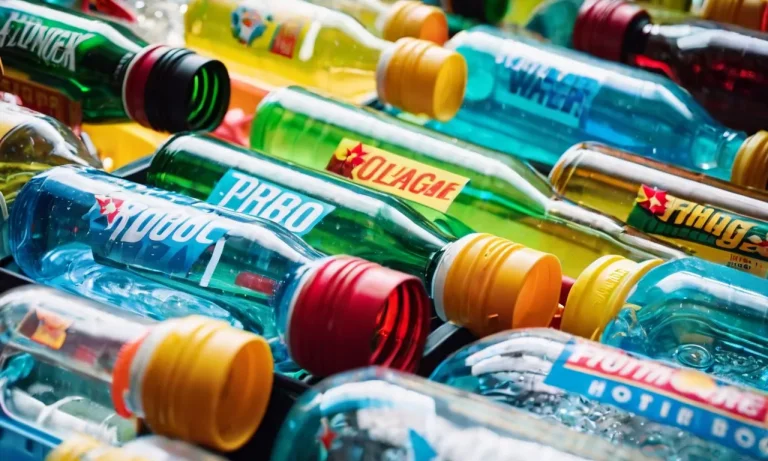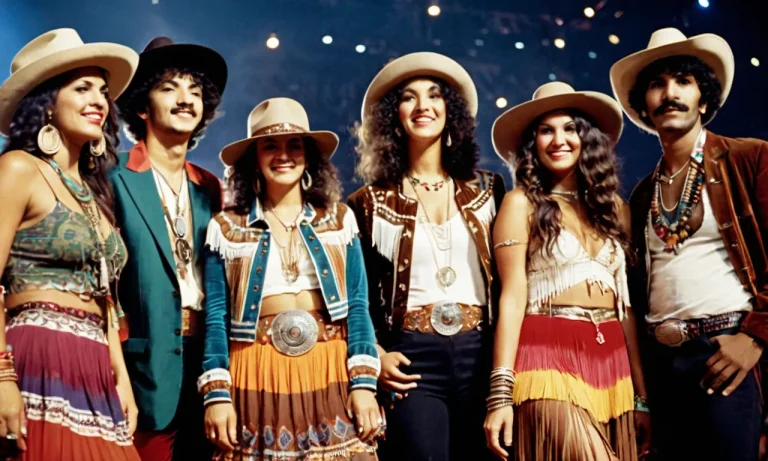What Can You Bring Back From Mexico On A Plane: A Complete Guide
What can you bring back from Mexico on a plane? Traveling to Mexico and bringing back souvenirs or personal items can be exciting but also confusing with customs regulations. If you’re wondering what you can and can’t bring back through airport security and customs, this comprehensive guide has got you covered.
If you’re short on time, here’s the quick answer: you can bring back most personal items like clothes, shoes, jewelry, souvenirs, crafts, and a reasonable amount of alcohol and tobacco. But you’ll need to declare amounts over the duty-free allowance and items like fresh produce, meat, plants, and endangered species are restricted.
Carry-On and Checked Luggage
What Are the General Luggage Restrictions?
When planning to bring items back from Mexico on a plane, it is important to be aware of the general luggage restrictions. Each airline has its own rules and regulations regarding weight limits and dimensions for both carry-on and checked luggage.
It is advisable to check with your airline before your trip to ensure you are within the allowed limits.
What Items Are Allowed in Carry-On Luggage?
Carry-on luggage is the bag or suitcase that you can bring with you into the cabin of the plane. It is important to note that there are restrictions on liquids, gels, and aerosols in carry-on bags. These items must be in containers of 3.4 ounces (100 milliliters) or less, and all containers must fit into a single quart-sized clear plastic bag.
This includes items such as toiletries, perfumes, and beverages.
Additionally, sharp objects, firearms, explosives, and flammable items are strictly prohibited in carry-on luggage. It is always a good idea to double-check the Transportation Security Administration (TSA) website for the most up-to-date list of prohibited items.
What Items Can Go in Checked Bags?
Checked bags are the larger suitcases that you hand over to the airline staff at the check-in counter. These bags are placed in the cargo hold of the plane. While there are fewer restrictions on the items allowed in checked bags, there are still some considerations to keep in mind.
It is important to pack any fragile or valuable items securely in your checked bags. Electronics, such as laptops and cameras, should be well-protected to prevent damage during the handling process. Additionally, be aware of any restrictions on items such as lithium batteries, which may need to be carried in your carry-on luggage instead.
Keep in mind that certain items may be restricted or prohibited altogether, such as firearms, explosives, and flammable materials. It is always a good idea to familiarize yourself with the airline’s baggage policies and any country-specific regulations.
For more information on airline luggage restrictions, you can visit the Transportation Security Administration (TSA) website or check with your specific airline for their guidelines.
Duty-Free Allowances for Alcohol and Tobacco
How Much Alcohol and Tobacco Can You Bring Back Duty-Free?
When traveling to Mexico, it’s important to be aware of the duty-free allowances for alcohol and tobacco. These allowances determine how much of these items you can bring back without having to pay any additional taxes or duties.
For alcohol, the duty-free allowance varies depending on the type of spirit. Generally, travelers are allowed to bring back up to 1 liter (33.8 ounces) of alcohol per person, as long as it is for personal use and not for resale. This can include wine, beer, or spirits such as tequila or mezcal.
However, it’s important to check with the specific airline and country regulations, as there may be further restrictions.
For tobacco, the duty-free allowance is also limited. Travelers are typically allowed to bring back up to 200 cigarettes or 100 cigars per person, as well as a reasonable amount of tobacco for personal use.
Again, it’s crucial to check the regulations of the airline and country you are flying to, as these allowances may vary.
What If You Exceed the Duty-Free Limits?
If you exceed the duty-free limits for alcohol and tobacco, you may be required to pay additional taxes or duties upon arrival at your destination. These fees can vary depending on the specific country’s regulations and can sometimes be quite substantial.
It’s essential to declare any items that exceed the duty-free limits to the customs authorities when you arrive. Failure to do so can result in penalties, fines, or the confiscation of the items. It’s always better to be honest and transparent about what you are bringing back to avoid any complications.
If you find that you have exceeded the duty-free limits, it’s wise to research the specific regulations of the country you are traveling to. Some countries may have higher duty-free allowances or lower tax rates for certain items.
By understanding these regulations, you can better prepare yourself for any additional fees you may need to pay.
For more detailed information on duty-free allowances and regulations, you can visit the official website of the U.S. Customs and Border Protection. They provide comprehensive information on what you can bring back from Mexico and other countries without incurring additional fees.
Food Items: What’s Allowed and What’s Prohibited
When traveling from Mexico to your home country, it’s essential to be aware of what food items you are allowed to bring back on a plane. Customs regulations vary from country to country, so it’s crucial to familiarize yourself with the rules to avoid any complications or confiscations at the airport.
Permitted Food Items from Mexico
There are various food items that are generally permitted to be brought back from Mexico. These items include:
- Fruits and vegetables: Fresh fruits and vegetables are allowed as long as they are unprocessed and free from pests or diseases. However, it’s important to check the regulations of your home country as some may have restrictions on certain types of produce.
- Spices and seasonings: Common spices and seasonings, such as chili powder, cumin, and oregano, are typically allowed. However, it’s always a good idea to check if there are any restrictions on specific spices.
- Canned goods: Canned goods, such as salsas, hot sauces, and canned meats, are generally permitted as long as they are commercially labeled and sealed.
- Chocolate and candy: Chocolates and candies are usually allowed unless they contain prohibited ingredients or are homemade.
- Coffee and tea: Packaged coffee and tea are generally allowed, but it’s a good idea to check for any specific restrictions on certain types or quantities.
Remember to always declare these items to the customs officer upon arrival and ensure they are properly packaged to prevent any spills or leaks during transit.
Prohibited Food Items Not Allowed Through Customs
While there are many food items that can be brought back from Mexico, there are also certain items that are prohibited and not allowed through customs. These items include:
- Fresh meat and poultry: Raw or uncooked meat and poultry products are generally not allowed due to the risk of spreading diseases.
- Unpasteurized dairy products: Products made from unpasteurized milk, such as certain cheeses and yogurts, are typically prohibited due to the potential health risks.
- Homemade or unpackaged foods: Homemade or unpackaged foods, such as tamales or homemade salsa, are generally not allowed as they may not meet the safety and labeling requirements.
- Fruit and vegetable plants: Bringing back live plants or seeds of fruits and vegetables is usually prohibited to prevent the spread of pests and diseases.
- Meat and dairy products from certain countries: Some countries may have additional restrictions on importing meat and dairy products from specific regions to prevent the spread of diseases like foot-and-mouth disease or avian influenza.
It’s important to note that these regulations can change, so it’s always a good idea to check the official customs website of your home country for the most up-to-date information. For example, if you are traveling to the United States, you can visit the U.S. Customs and Border Protection website for detailed information on what food items are allowed or prohibited.
By familiarizing yourself with the regulations and following them accordingly, you can ensure a smoother journey back home with your favorite Mexican food items.
Plants, Animals, and Wildlife Products
Restrictions on Bringing Back Plants and Produce
When it comes to bringing back plants and produce from Mexico, there are certain restrictions in place to protect the environment and prevent the spread of pests and diseases. It is important to be aware of these restrictions before attempting to bring any plants or produce back on the plane.
The United States Department of Agriculture (USDA) has specific guidelines for bringing plants and plant products into the country. Certain fruits, vegetables, and plants may be allowed, while others may be prohibited due to the risk of introducing pests or diseases.
For example, citrus fruits, including oranges and lemons, are generally prohibited due to the threat of citrus canker and citrus greening. On the other hand, processed fruits and vegetables, such as canned or dried goods, are usually permitted.
It is best to check with the USDA’s Animal and Plant Health Inspection Service (APHIS) or the Customs and Border Protection (CBP) for the most up-to-date information on what plants and produce are allowed to be brought back from Mexico.
They can provide you with a list of approved items and any necessary documentation or permits that may be required.
Banned Wild Animals and Wildlife Products
While it may be tempting to bring back a unique souvenir or exotic pet from Mexico, it is important to note that there are strict regulations in place regarding the importation of wild animals and wildlife products.
These regulations are in place to protect endangered species and prevent illegal wildlife trafficking.
The U.S. Fish and Wildlife Service (USFWS) enforces these regulations and maintains a list of endangered species and wildlife products that are prohibited from being brought into the country. This includes items such as ivory, tortoise shells, and certain animal skins and furs.
It is illegal to bring these items back from Mexico without the appropriate permits or documentation.
Additionally, certain animals, such as primates, big cats, and certain reptiles, are not allowed to be kept as pets in many states. It is important to research and understand the laws and regulations regarding exotic pets before attempting to bring one back from Mexico.
To ensure compliance with these regulations, it is recommended to consult the USFWS or the CBP for the most up-to-date information on what wildlife products and animals are prohibited from being brought back from Mexico.
They can provide guidance on legal and ethical ways to enjoy the wildlife and natural beauty of Mexico without contributing to illegal trade or endangered species.
Souvenirs, Artisan Crafts, and Other Personal Items
When traveling to Mexico, it’s always exciting to bring back a piece of the vibrant culture and unique craftsmanship as a souvenir. However, it’s important to be aware of the rules and regulations regarding what you can bring back from Mexico on a plane.
This complete guide will provide you with all the information you need to ensure a smooth journey home with your cherished mementos.
Typically Allowed Souvenirs from Mexico
Mexico is known for its exquisite artisan crafts, and there are several items that you are typically allowed to bring back with you on a plane. These include:
- Handmade textiles, such as embroidered clothing or woven rugs
- Talavera pottery, a traditional Mexican ceramic art form
- Alebrijes, brightly colored wooden sculptures of fantastical creatures
- Traditional Mexican clothing, such as embroidered blouses or sombreros
- Silver jewelry, particularly from Taxco, a renowned silver mining town
These souvenirs not only serve as beautiful reminders of your trip, but they also support local artisans and their communities. Just make sure to check the size and weight restrictions imposed by your airline, as some larger items may need to be shipped separately.
Other Personal Items You Can Bring
In addition to souvenirs and artisan crafts, there are other personal items that you can bring back from Mexico on a plane. These include:
- Traditional Mexican food products, such as hot sauce, spices, or tequila
- Handcrafted leather goods, including belts, wallets, and bags
- Decorative traditional masks
- Aztec or Mayan-inspired artwork
- Handmade musical instruments, like maracas or guitars
It’s important to note that there may be restrictions on certain food products, particularly those made from animal or plant materials. It’s always a good idea to check with your airline or the customs department to ensure compliance with regulations.
Remember, while it’s exciting to bring back mementos from your trip, it’s equally important to respect the cultural heritage of Mexico. Avoid purchasing or bringing back items made from protected species, such as sea turtle shells or certain types of coral.
By being mindful of these guidelines, you can have a memorable and responsible shopping experience in Mexico.
What Can You Bring Back From Mexico On A Plane – Conclusion
We hope this guide gave you a good idea of what you can and can’t bring back from your trip to Mexico. Focus on permissible personal items, duty-paid alcohol and tobacco, and non-restricted souvenirs. But leave behind fresh produce, meat, endangered species, and excessive amounts of restricted goods.
Planning your luggage and customs declaration ahead helps avoid stress at the airport. Most of all, enjoy your Mexican travel experience and the special mementos it may bring!








